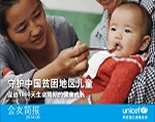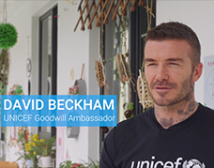II. Guidelines for interviewing children
1. Do no harm to any child; avoid questions, attitudes or comments that are judgmental, insensitive to cultural values, that place a child in danger or expose a child to humiliation, or that reactivate a child's pain and grief from traumatic events.
2. Do not discriminate in choosing children to interview because of sex, race, age, religion, status, educational background or physical abilities.
3. No staging: Do not ask children to tell a story or take an action that is not part of their own history.
4. Ensure that the child or guardian knows they are talking with a reporter. Explain the purpose of the interview and its intended use.
5. Obtain permission from the child and his or her guardian for all interviews, videotaping and, when possible, for documentary photographs. When possible and appropriate, this permission should be in writing. Permission must be obtained in circumstances that ensure that the child and guardian are not coerced in any way and that they understand that they are part of a story that might be disseminated locally and globally. This is usually only ensured if the permission is obtained in the child's language and if the decision is made in consultation with an adult the child trusts.
6. Pay attention to where and how the child is interviewed. Limit the number of interviewers and photographers. Try to make certain that children are comfortable and able to tell their story without outside pressure, including from the interviewer. In film, video and radio interviews, consider what the choice of visual or audio background might imply about the child and her or his life and story. Ensure that the child would not be endangered or adversely affected by showing their home, community or general whereabouts.
III. Guidelines for reporting on children
1. Do not further stigmatize any child; avoid categorisations or descriptions that expose a child to negative reprisals - including additional physical or psychological harm, or to lifelong abuse, discrimination or rejection by their local communities.
2. Always provide an accurate context for the child's story or image.
3. Always change the name and obscure the visual identity of any child who is identified as:
a. A victim of sexual abuse or exploitation,
b. A perpetrator of physical or sexual abuse,
c. HIV positive, or living with AIDS, unless the child, a parent or a guardian gives fully informed consent,
d. Charged or convicted of a crime.
4. In certain circumstances of risk or potential risk of harm or retribution, change the name and obscure the visual identity of any child who is identified as: a. A current or former child combatant, b. An asylum seeker, a refugee or an internal displaced person.
5. In certain cases, using a child's identity - their name and/or recognizable image - is in the child's best interests. However, when the child's identity is used, they must still be protected against harm and supported through any stigmatization or reprisals.
Some examples of these special cases are:
a. When a child initiates contact with the reporter, wanting to exercise their right to freedom of expression and their right to have their opinion heard.
b. When a child is part of a sustained programme of activism or social mobilization and wants to be so identified.
c. When a child is engaged in a psychosocial programme and claiming their name and identity is part of their healthy development.
6. Confirm the accuracy of what the child has to say, either with other children or an adult, preferably with both.
7. When in doubt about whether a child is at risk, report on the general situation for children rather than on an individual child, no matter how newsworthy the story.
IV. Use of UNICEF materials
All of UNICEF materials are protected by copyright, including text, photographs, images and videotapes. Permission to reproduce any UNICEF material must be requested from the originating UNICEF office, and will be only be granted on the condition that the principles and guidelines in this document are adhered to.
Sources: The Convention on the Rights of the Child; Child Rights and the Media: Guidelines for Journalists, International Federation of Journalists; Media and Children in Need of Special Protection, (internal document), UNICEF's Division of Communication; Second International Consultation on HIV/AIDS and Human Rights, United Nations Secretary-General.
For further information, please contact:
Shantha Bloemen, UNICEF China, +86 13910973801, sbloemen@unicef.org or
Liu Li, UNICEF China, +86 13701066671, liliu@unicef.org
DOWNLOAD PDF FILE
































